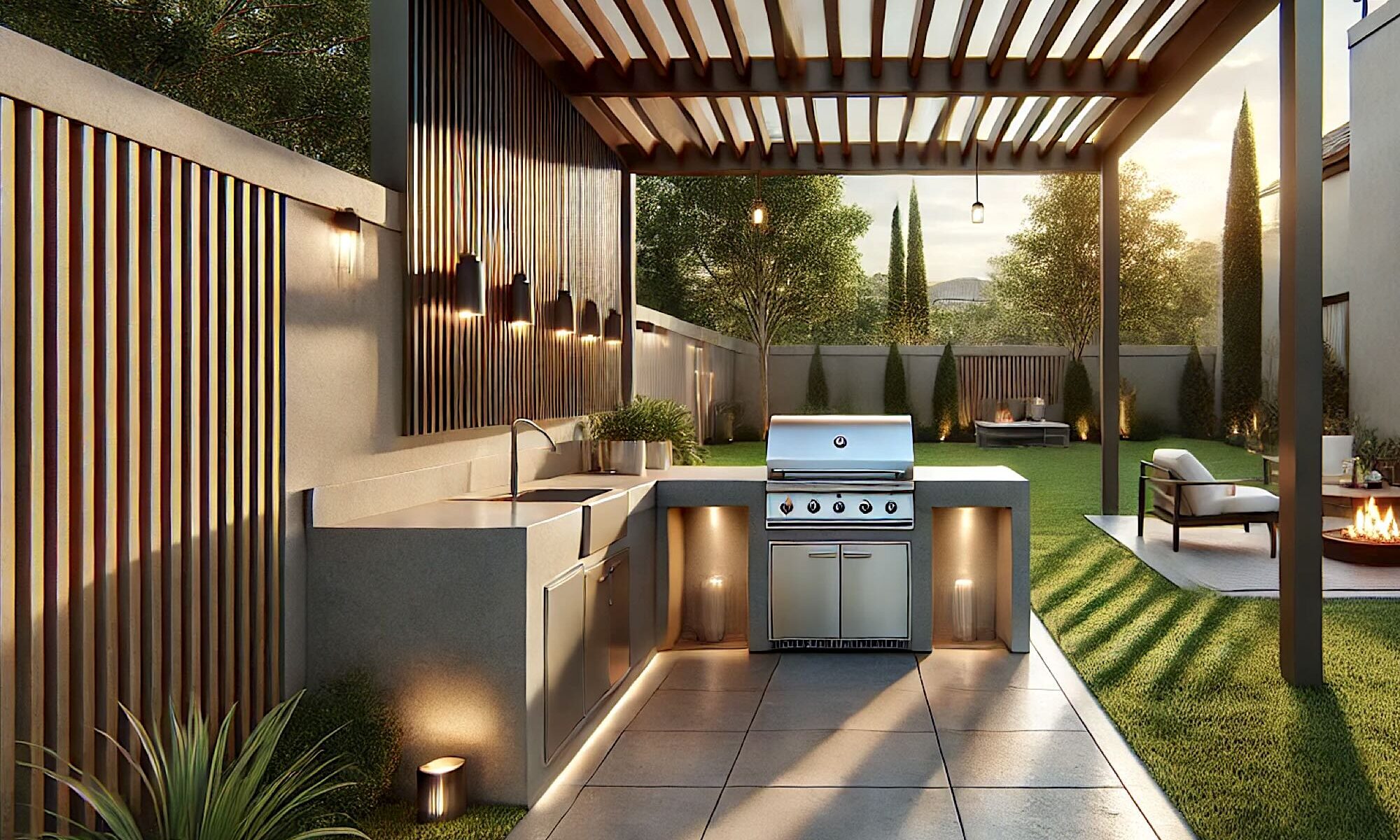As the days grow longer and warmer, life naturally spills outdoors. The simple joys of summer—grilling in the open air, dining under the stars, and gathering with loved ones—are made even better by the rising popularity of al fresco kitchens. Far from being just a luxurious addition to the home, these outdoor cooking spaces are practical, sustainable, and rooted in a history that stretches back centuries. Let’s explore why al fresco kitchens are a summer essential, where they came from, and what the future holds for this timeless concept.
Why Al Fresco Kitchens Make Sense
For many, summer means turning down the oven and avoiding the heat buildup that makes indoor cooking a chore. An al fresco kitchen solves this problem by moving the action outdoors, keeping your home cooler and your energy bills lower. By cooking outside, you reduce the strain on your air conditioning and embrace a natural ventilation system—the summer breeze.
Practicality extends beyond temperature control. Al fresco kitchens are also a hub for social connection. Instead of isolating the cook indoors, these spaces let you prepare meals while enjoying the company of family and friends. Whether it’s a casual barbecue or a full-fledged feast, cooking becomes a communal experience that blends seamlessly into the rhythm of outdoor living.
In terms of sustainability, outdoor kitchens are an excellent choice. Many incorporate grills, pizza ovens, or solar-powered appliances, making them energy-efficient alternatives. Additionally, cooking outdoors often encourages seasonal eating, with meals centred around fresh, locally sourced ingredients that are easy to prepare on a grill or in a wood-fired oven.
The Origins of Al Fresco Kitchens
While the modern al fresco kitchen feels fresh and contemporary, its roots are deeply traditional. Outdoor cooking has been a part of human life for millennia, long before the invention of indoor ranges and microwaves. In warm climates around the world, from the Mediterranean to South America, cooking outdoors was the norm—a necessity driven by heat and practicality.
Italian cucine all’aperto (outdoor kitchens) and Spanish cocinas de verano (summer kitchens) are early examples of spaces designed specifically for outdoor cooking. In rural communities, these areas often featured wood-fired ovens, open hearths, and plenty of space for preparing seasonal harvests. In the American South, summer kitchens were common in the 18th and 19th centuries, often housed in separate buildings to keep heat, smoke, and smells out of the main house.
These early al fresco kitchens weren’t just about keeping cool—they reflected a connection to the land and the seasons. Meals prepared outdoors had a certain simplicity and authenticity, a tradition that continues to resonate in today’s modern interpretations.
The Future of Al Fresco Kitchens
As outdoor living continues to gain popularity, al fresco kitchens are evolving into more than just a place to grill. Modern designs often feature sophisticated setups with sinks, refrigerators, dishwashers, and even outdoor wine coolers. These fully functional kitchens blur the line between indoor and outdoor spaces, creating a seamless flow that caters to both practicality and style.
Technology is also playing a role in shaping the future of outdoor kitchens. Smart appliances, weather-resistant materials, and solar-powered gadgets are making these spaces more durable and versatile. Imagine a pizza oven that connects to your smartphone, allowing you to monitor temperatures or set timers remotely while mingling with guests.
The rise of eco-conscious design is another trend to watch. Recycled materials, sustainable building practices, and efficient energy solutions are becoming hallmarks of outdoor kitchen design. With the growing emphasis on green living, al fresco kitchens are poised to be a staple for homeowners looking to live more sustainably.


